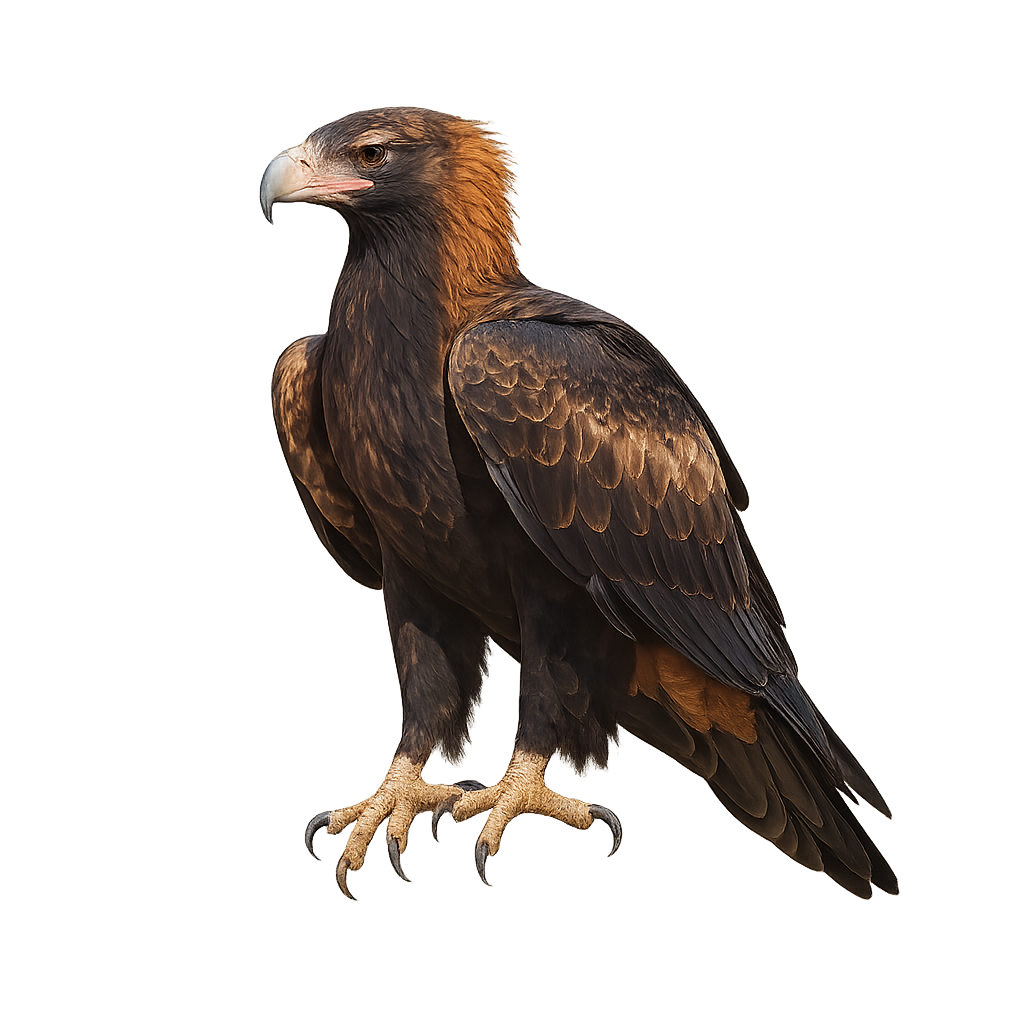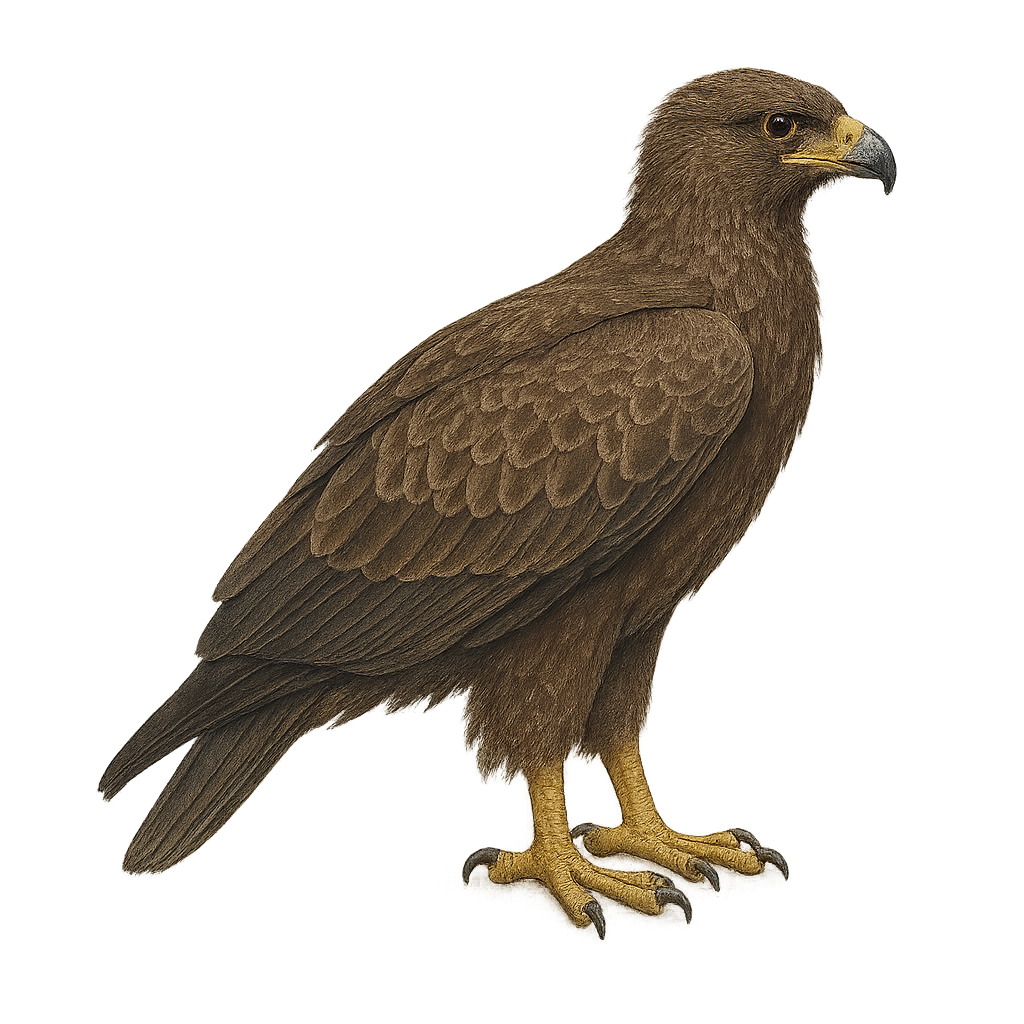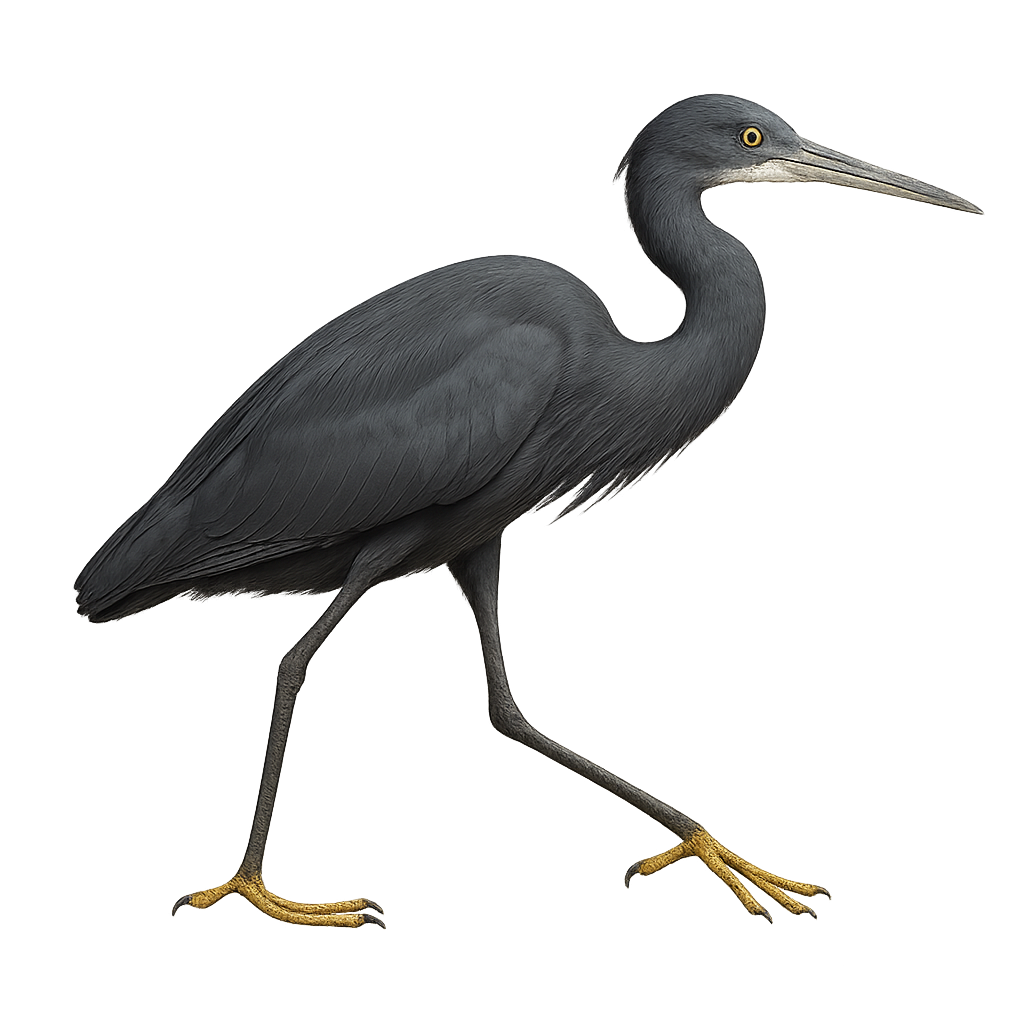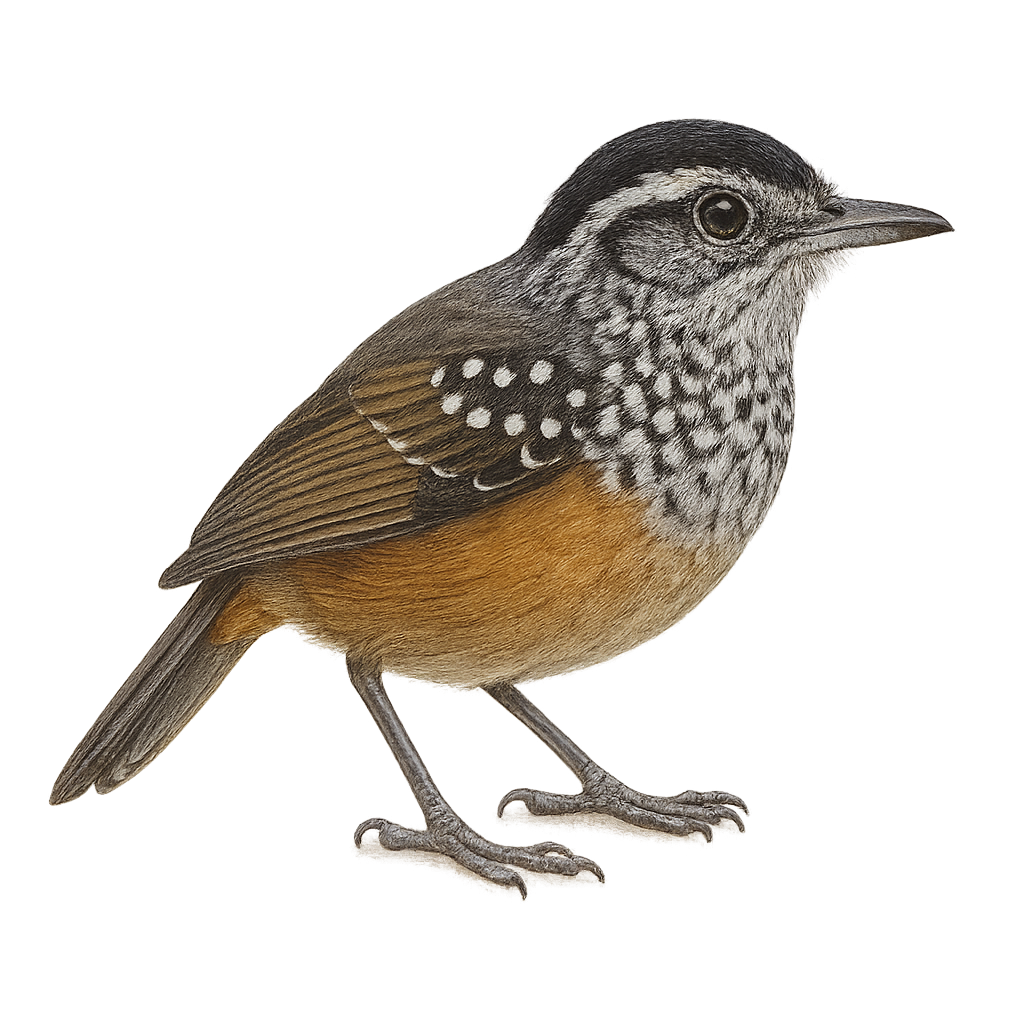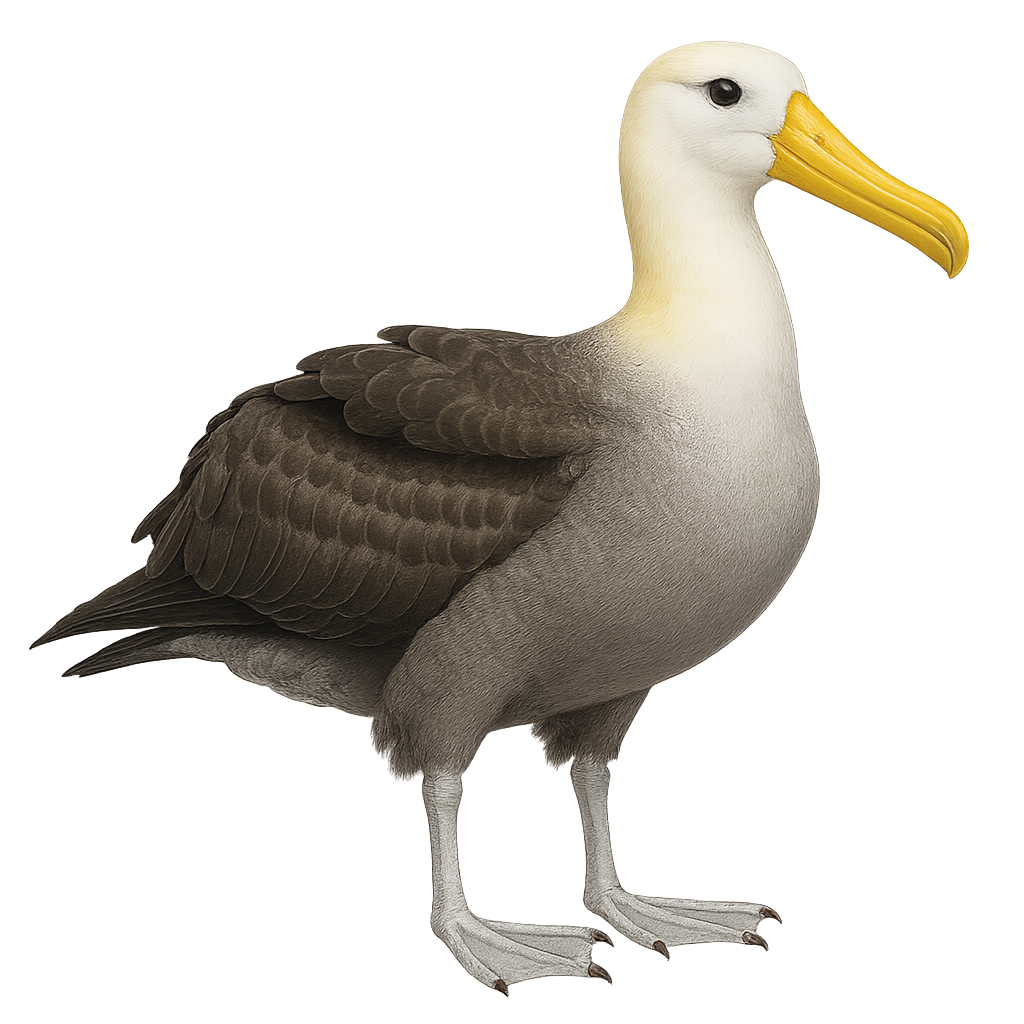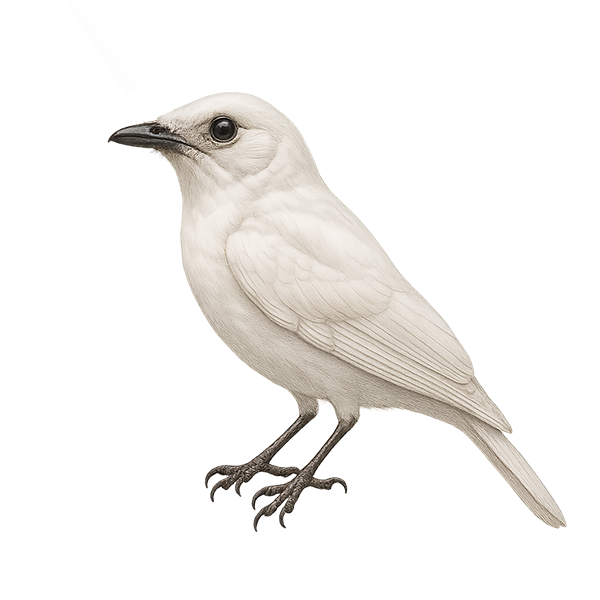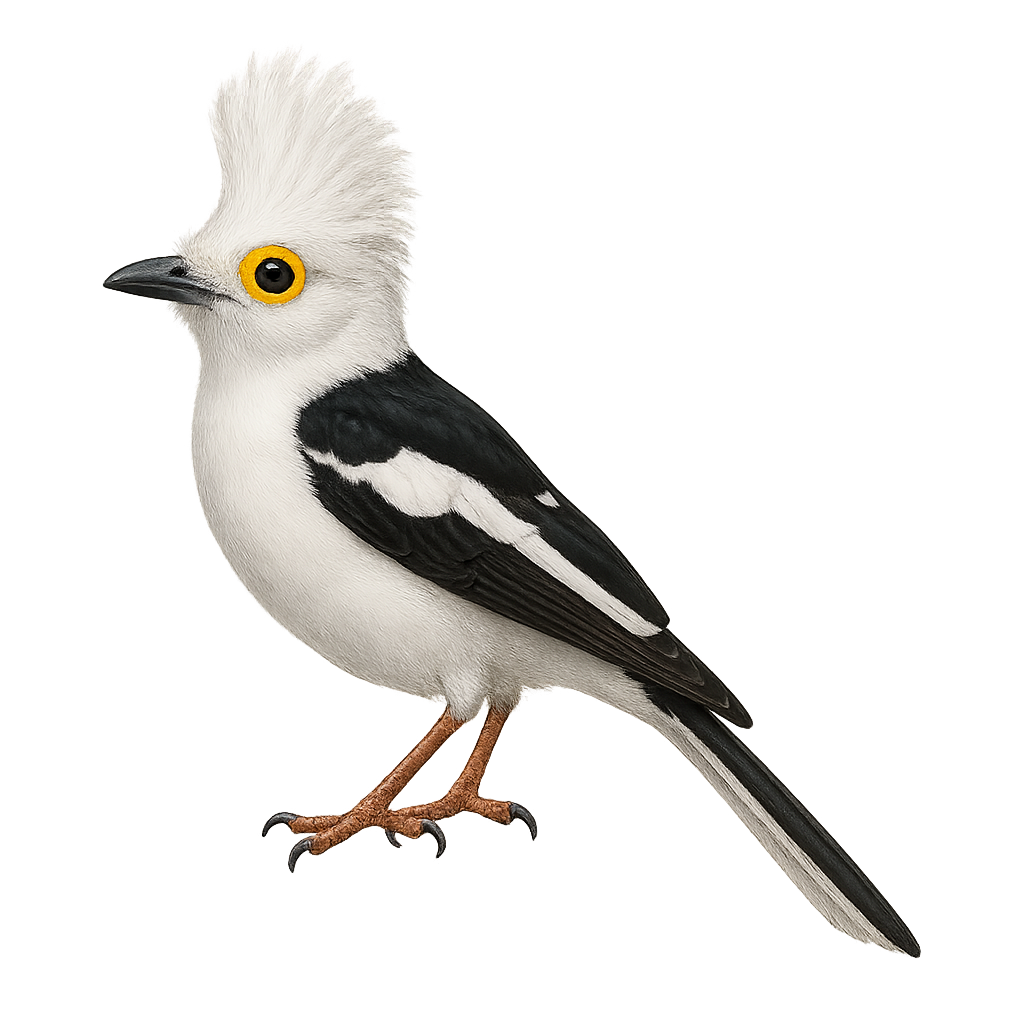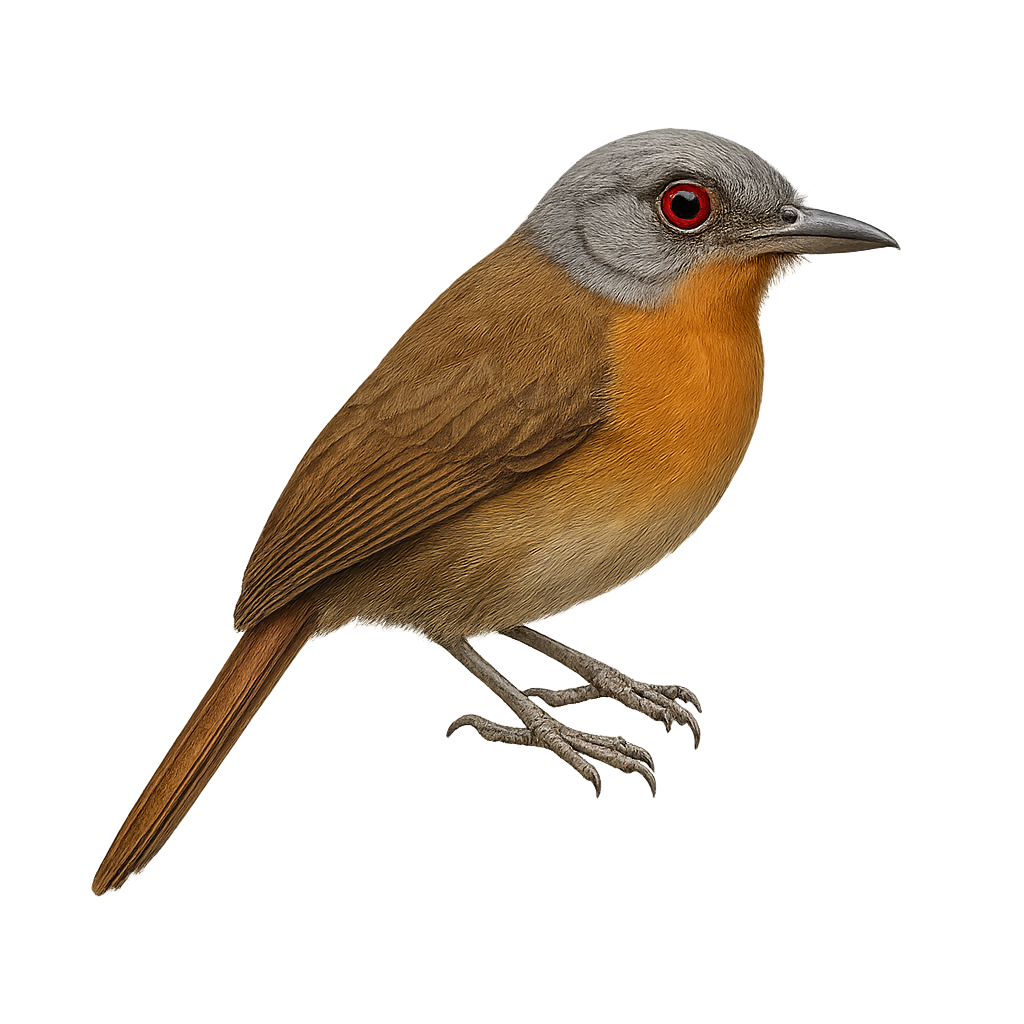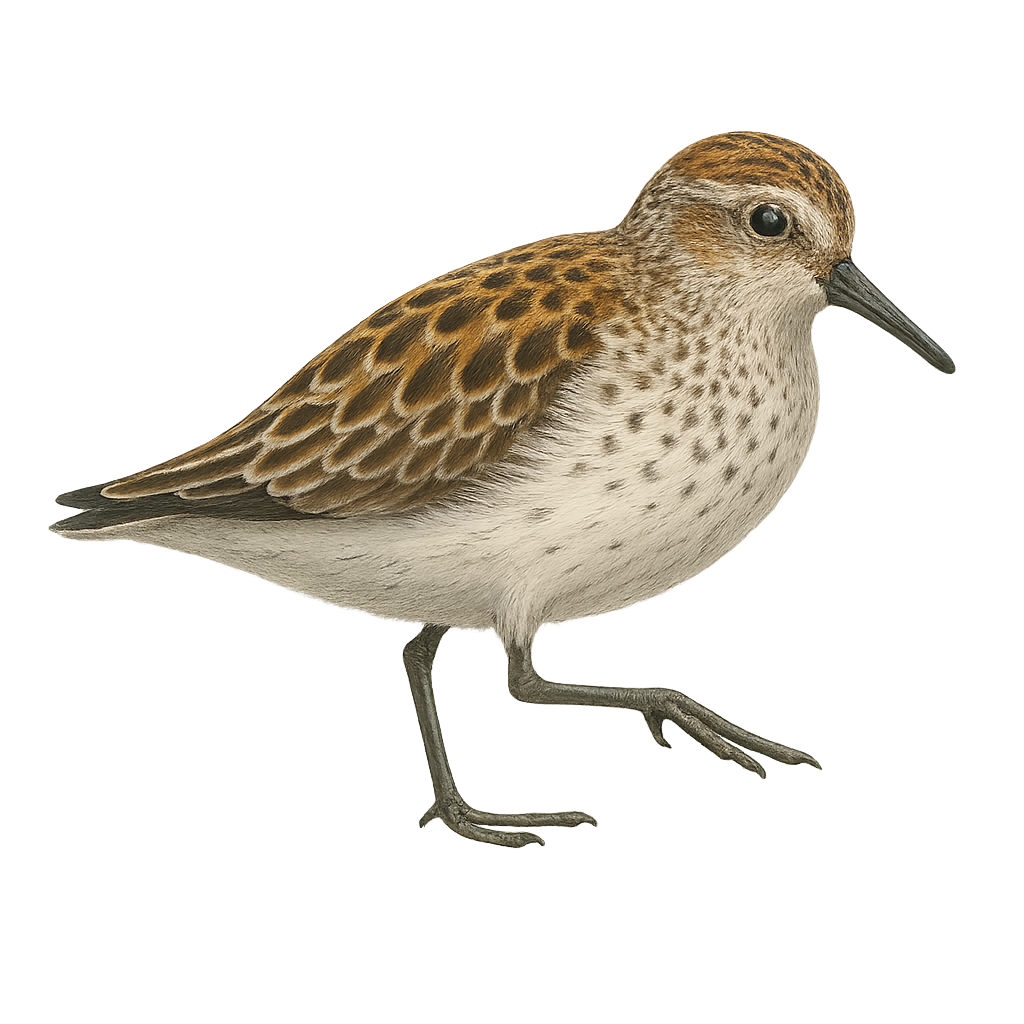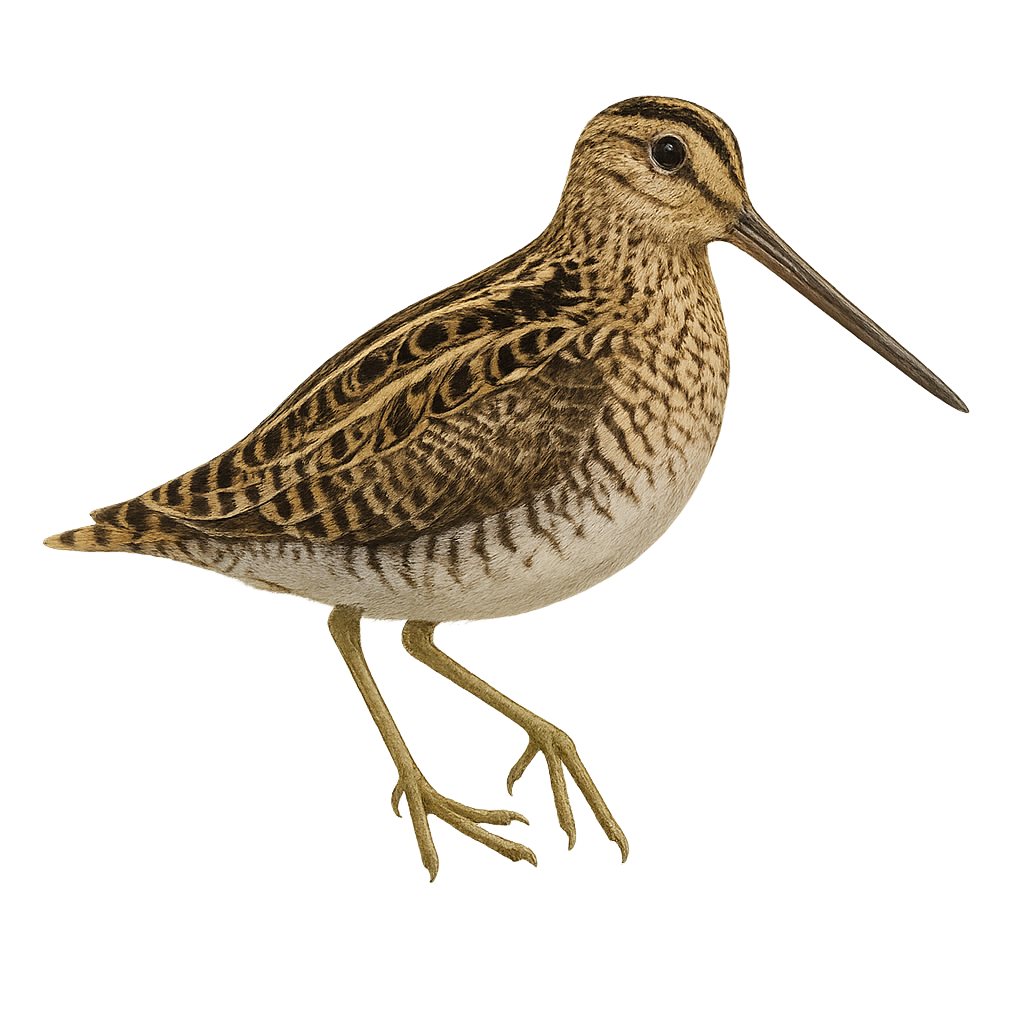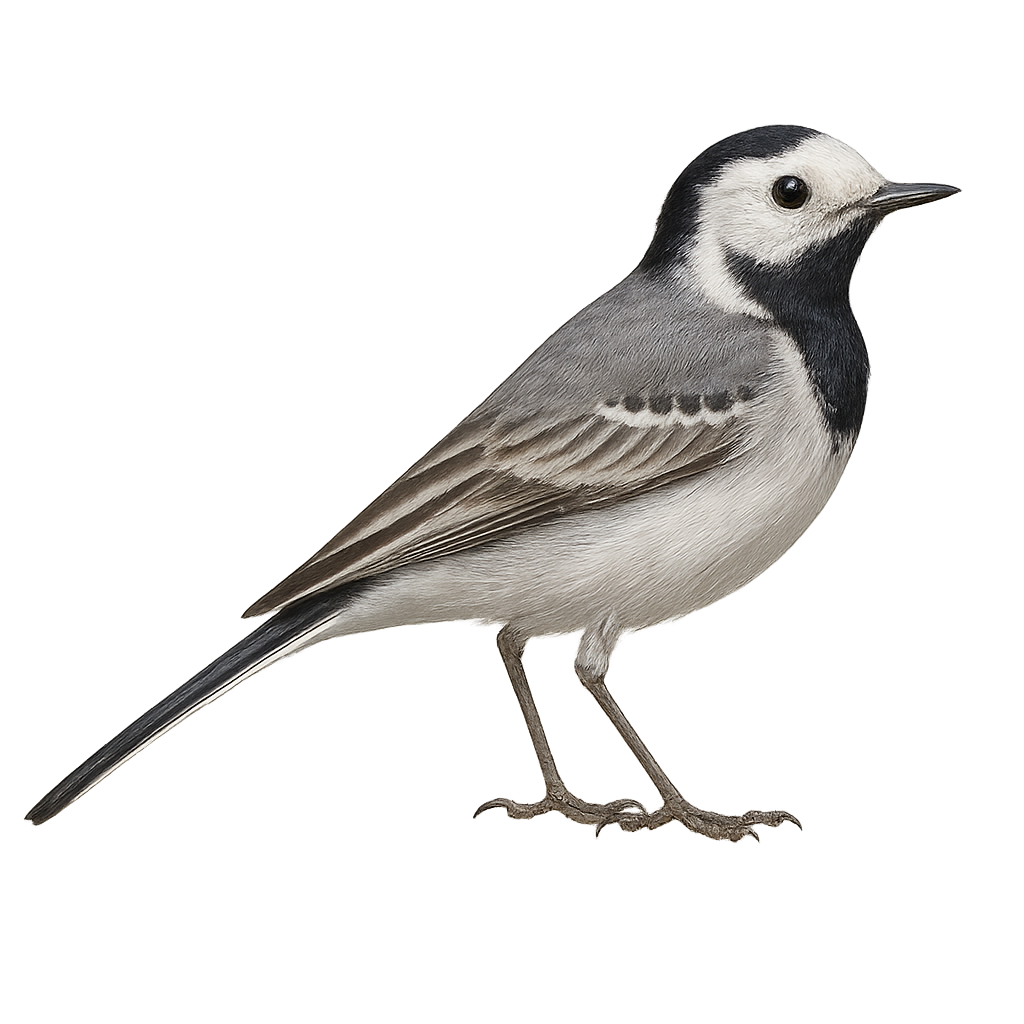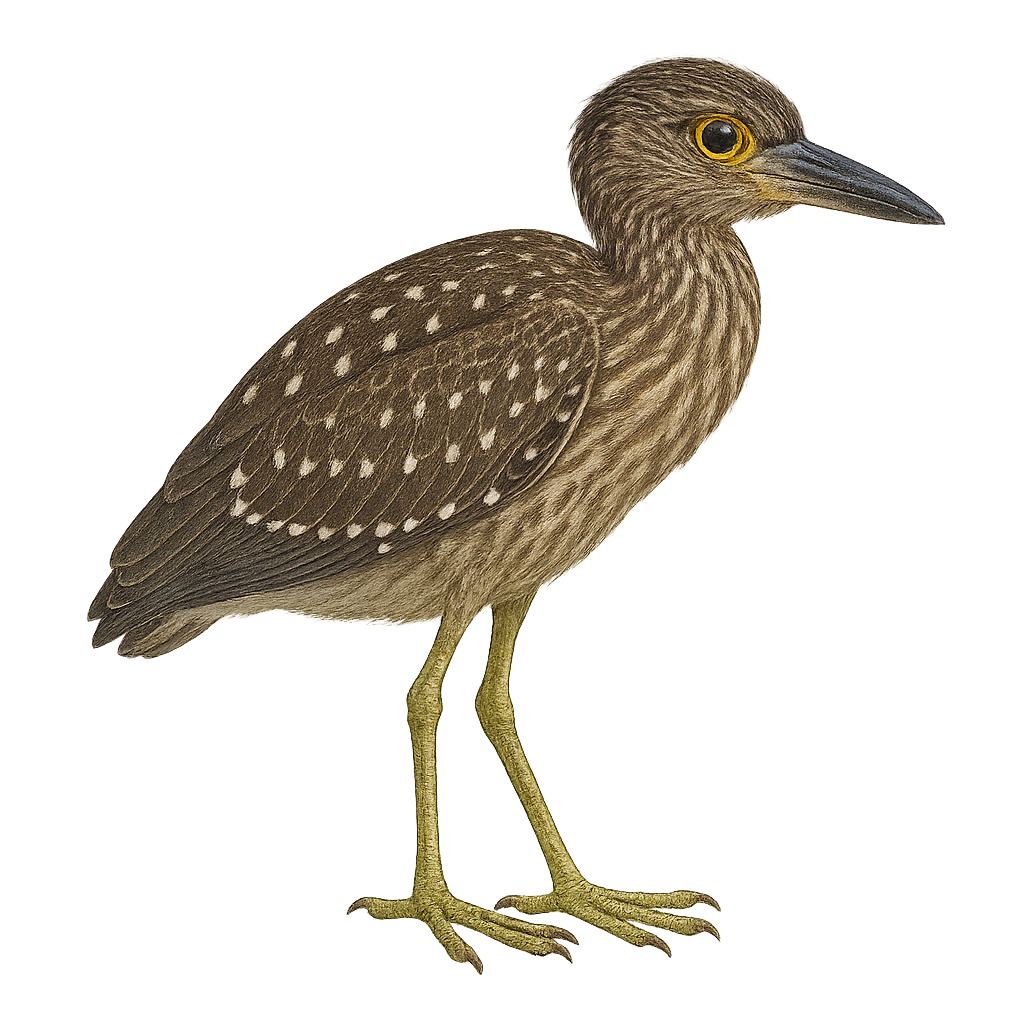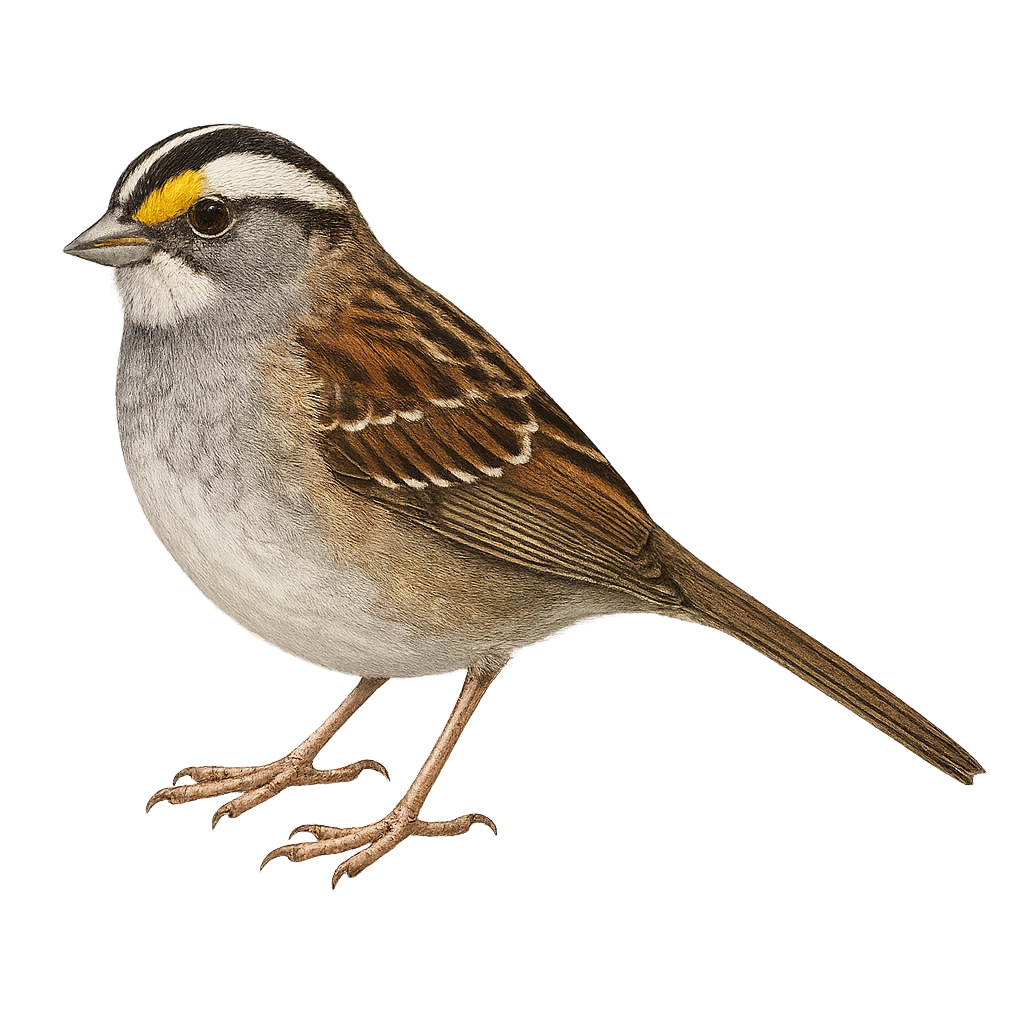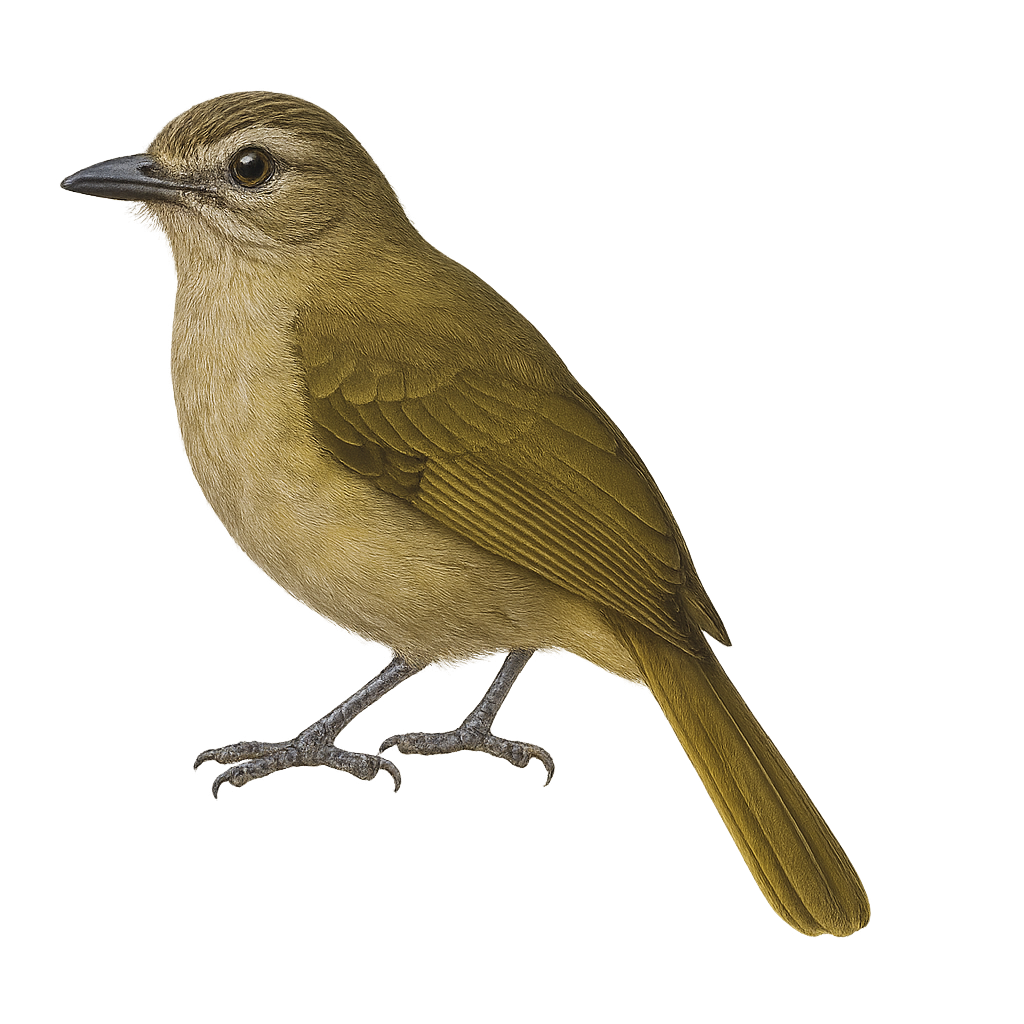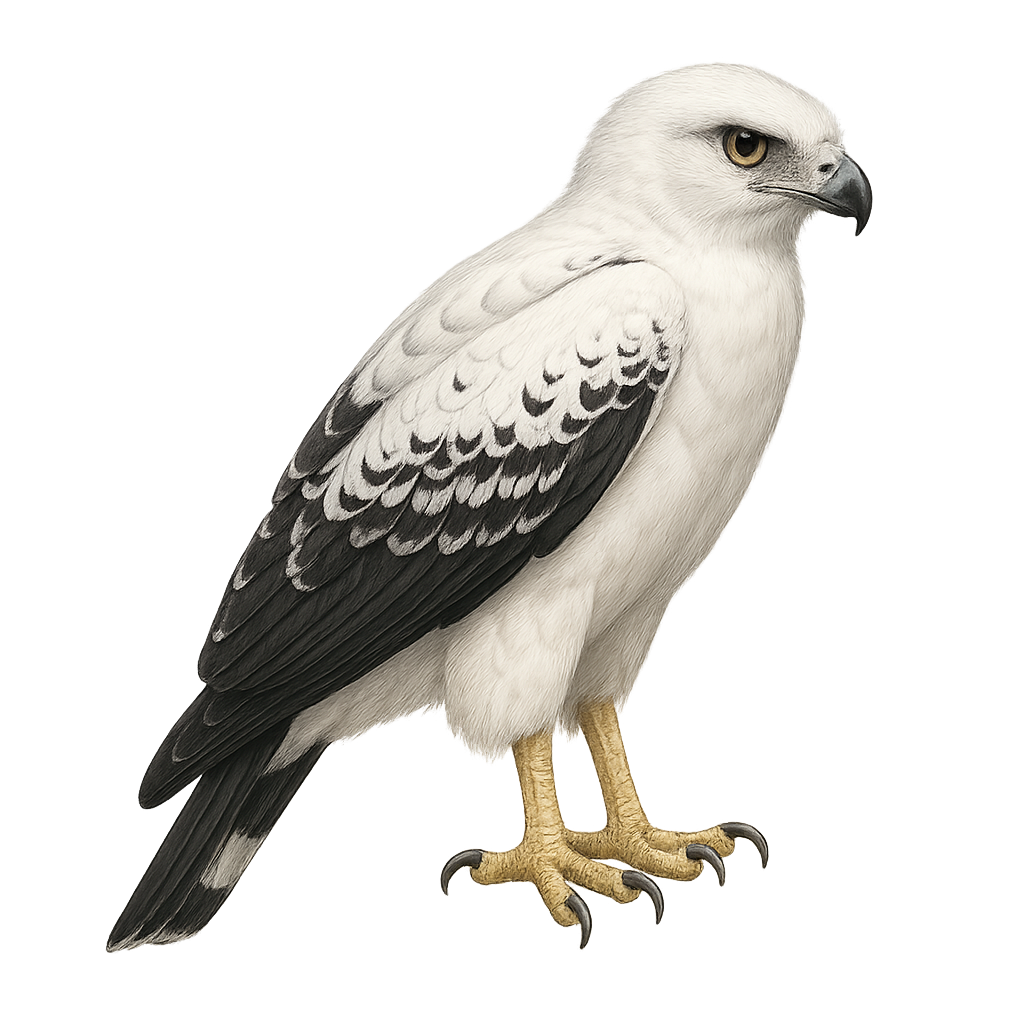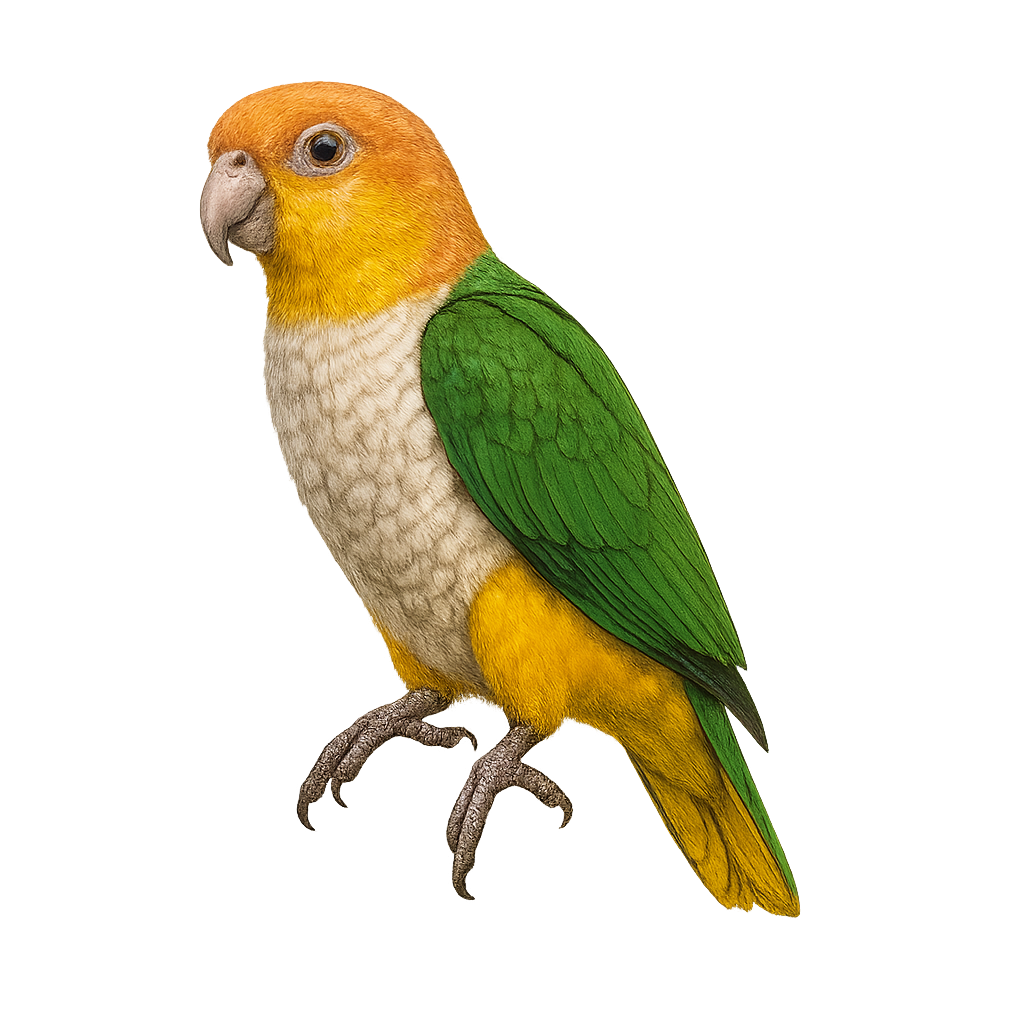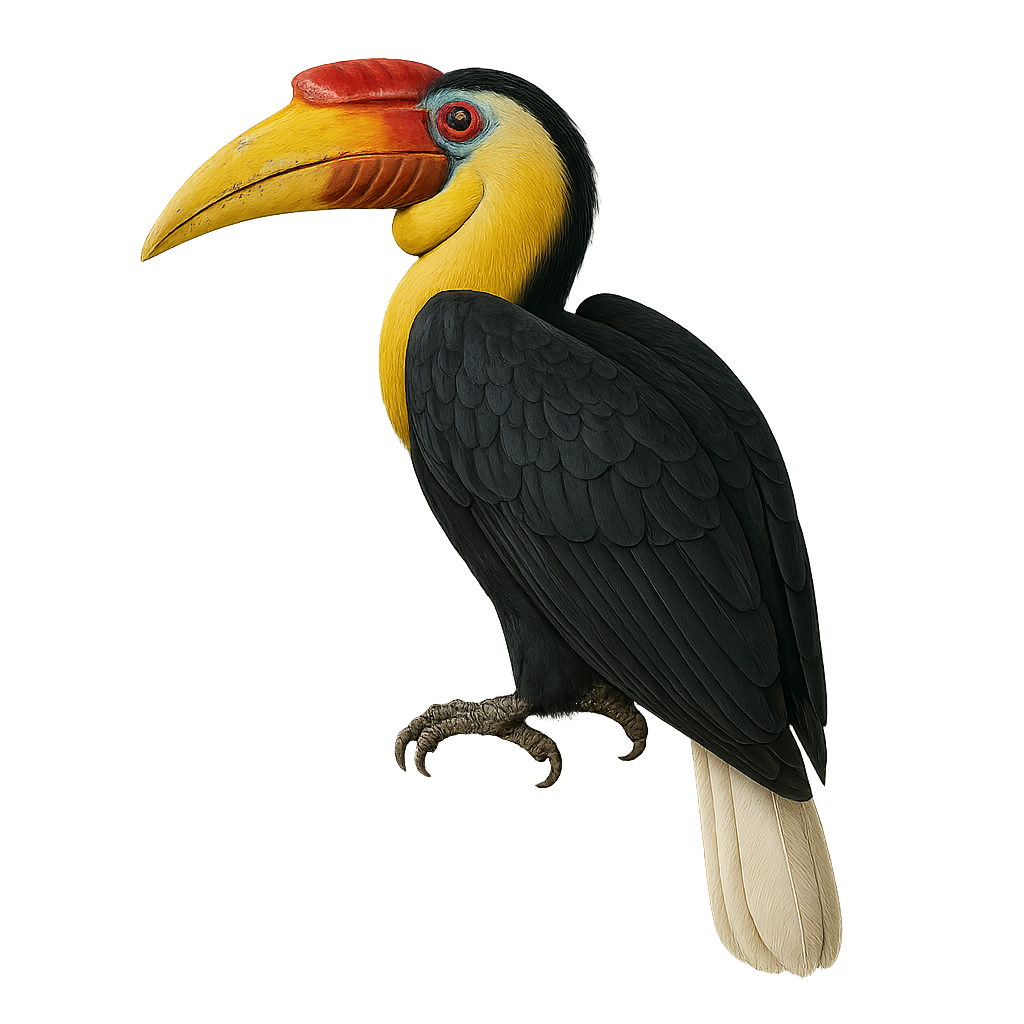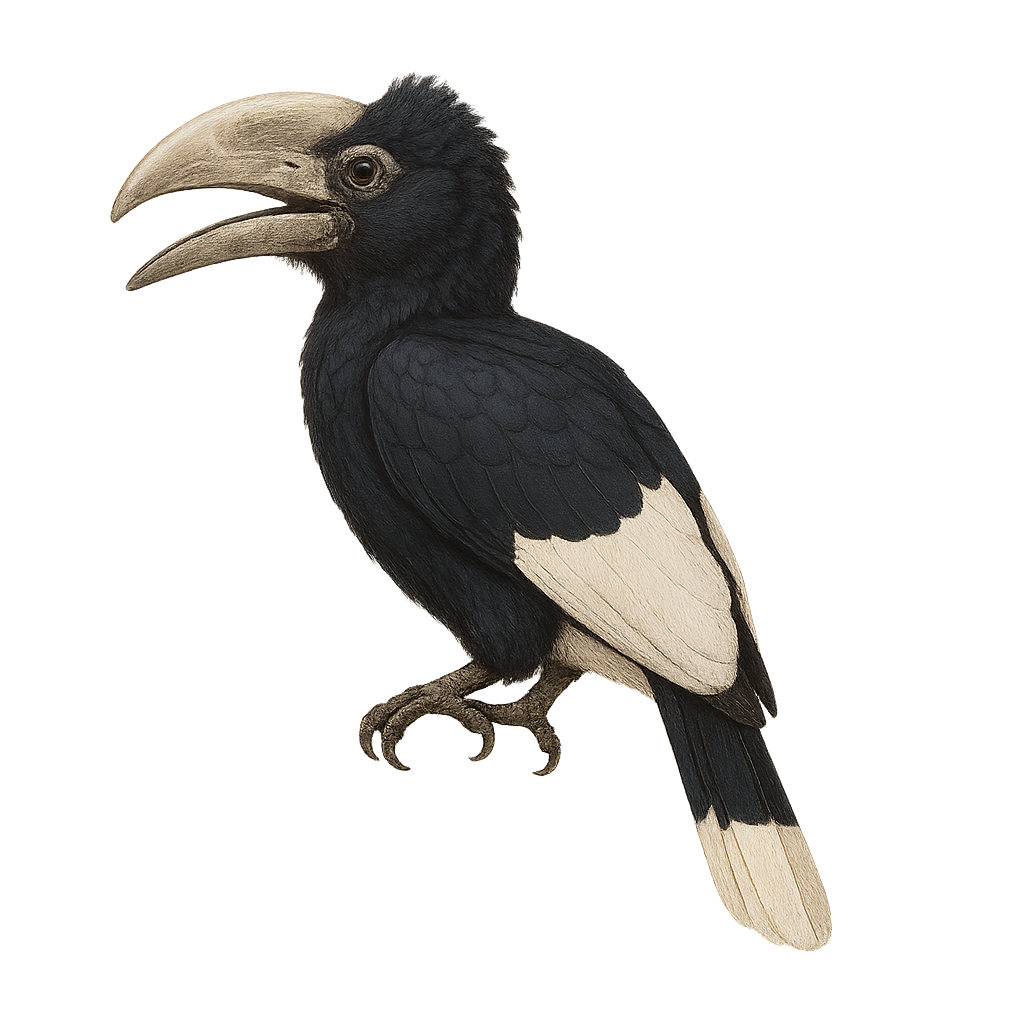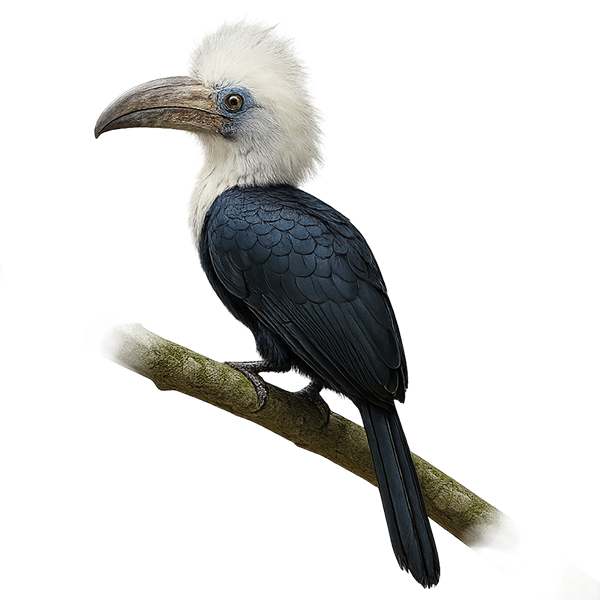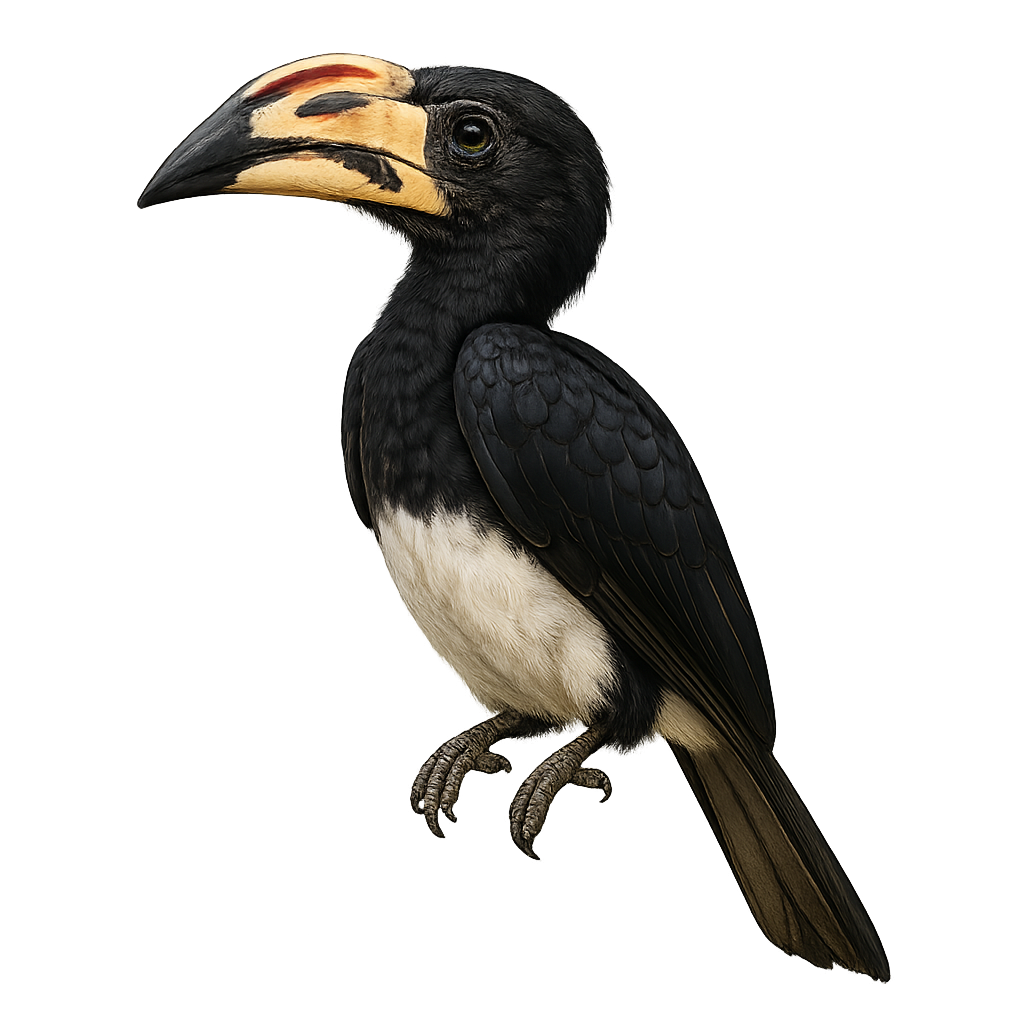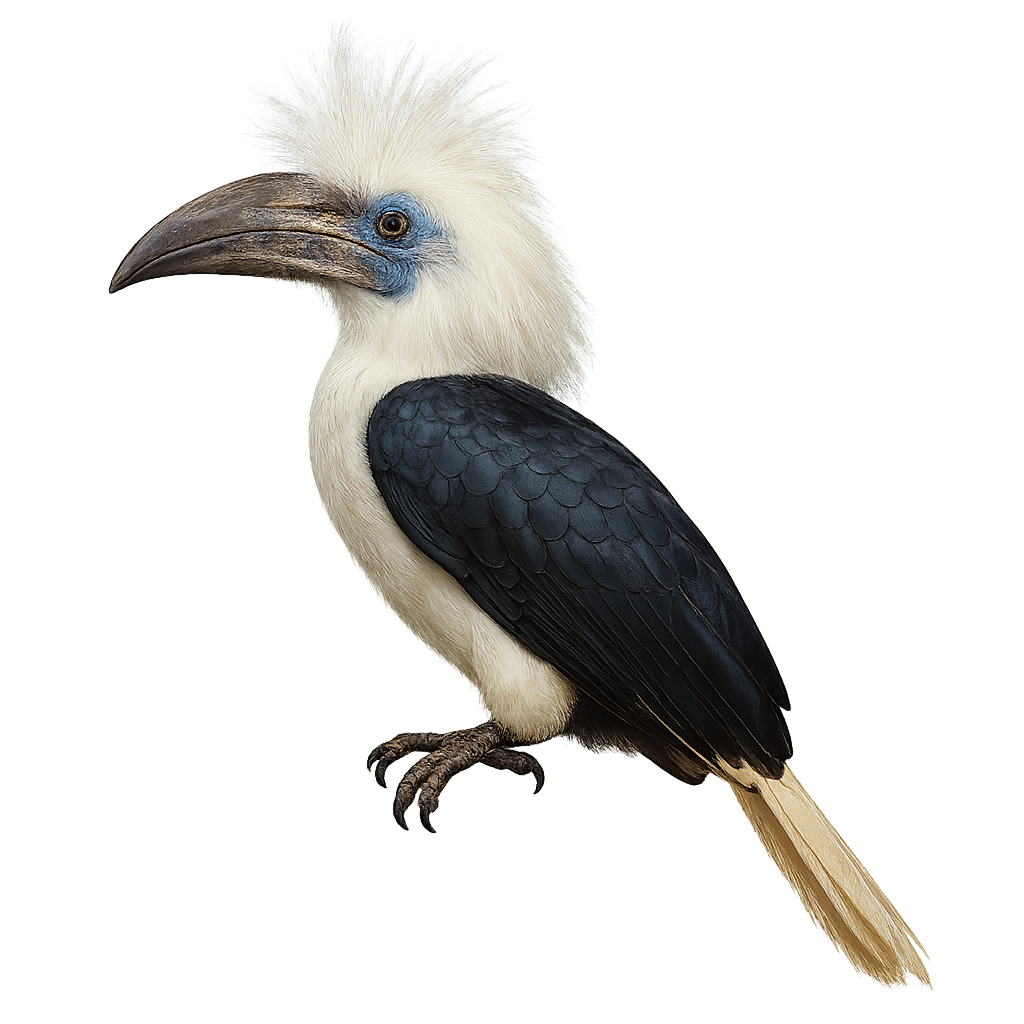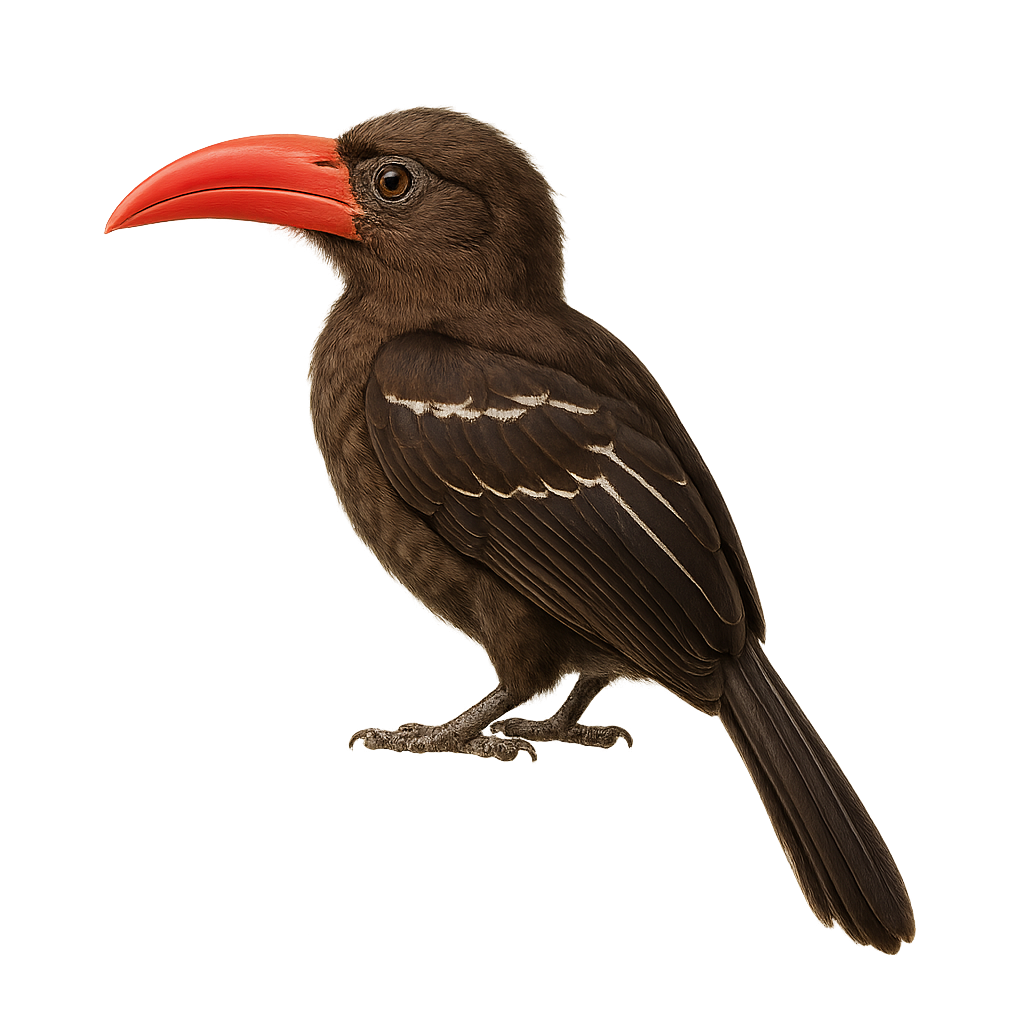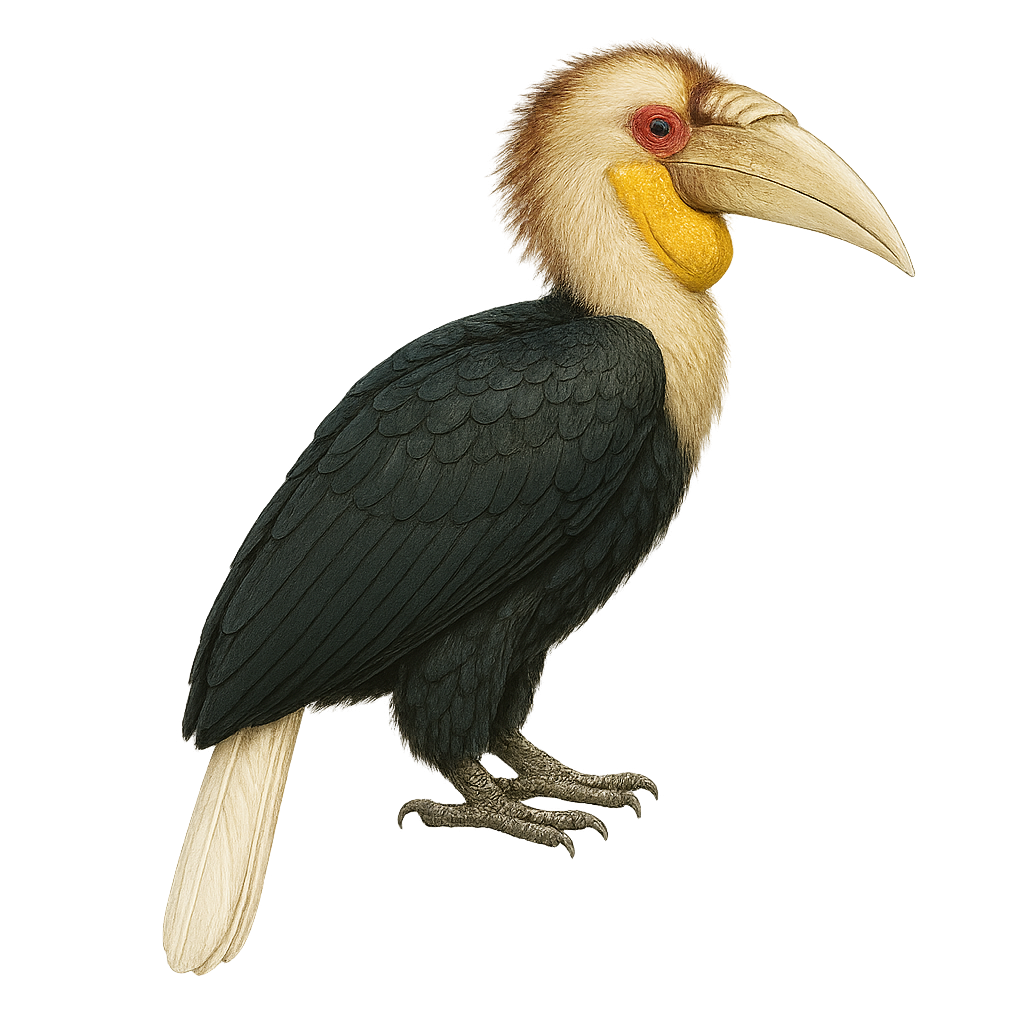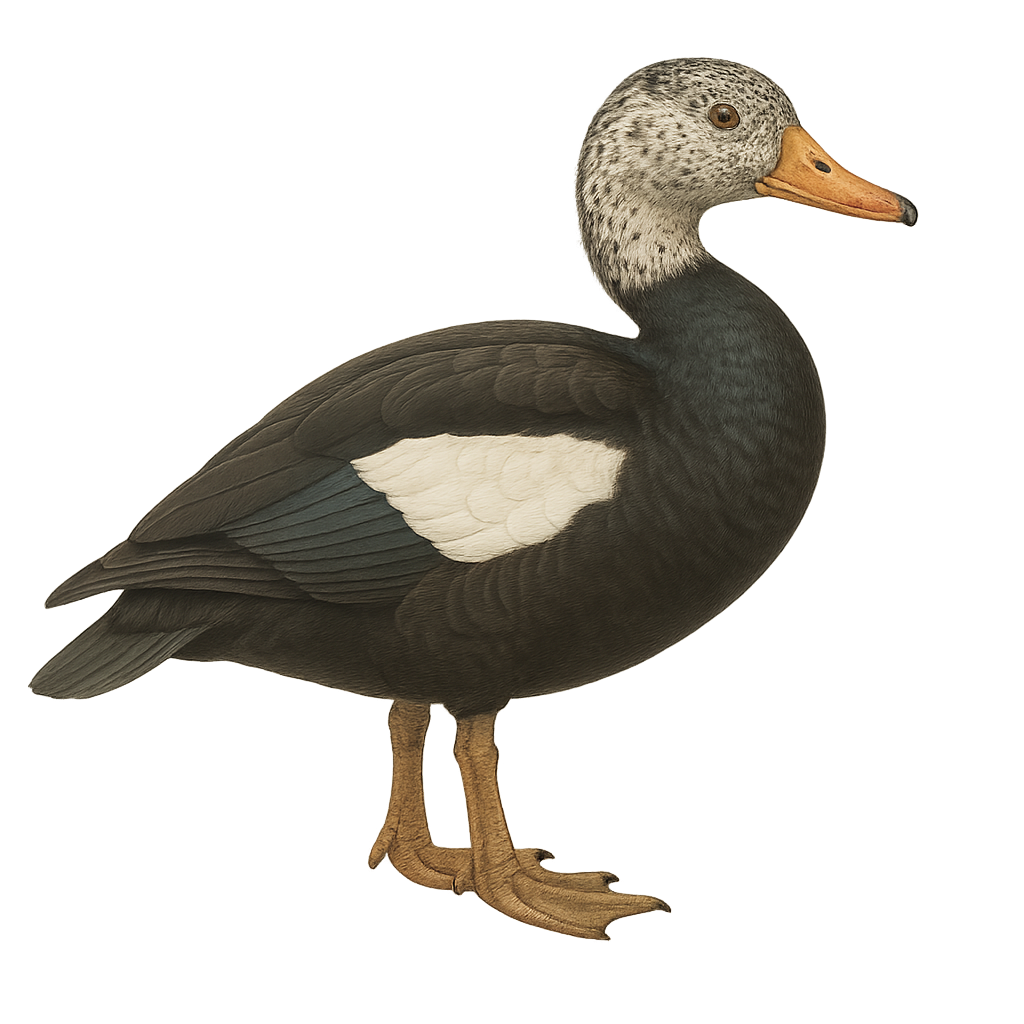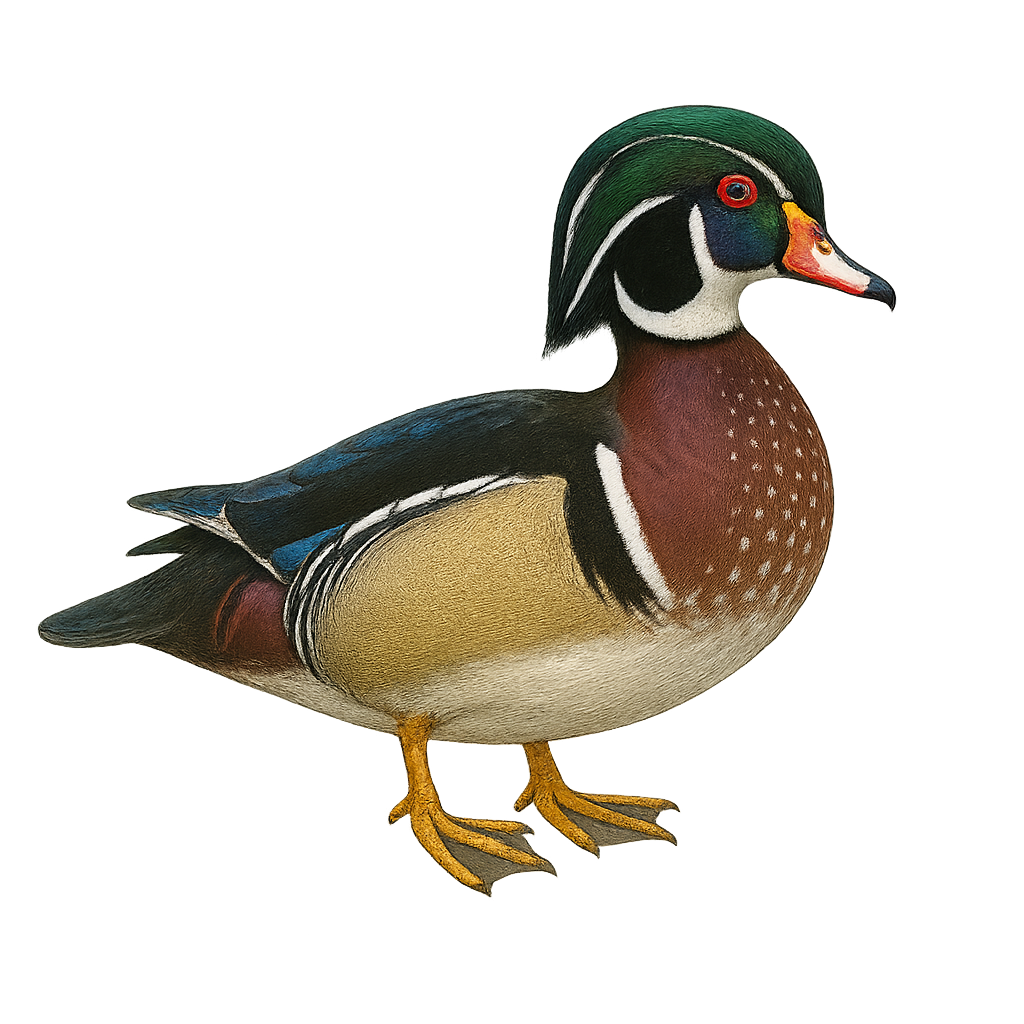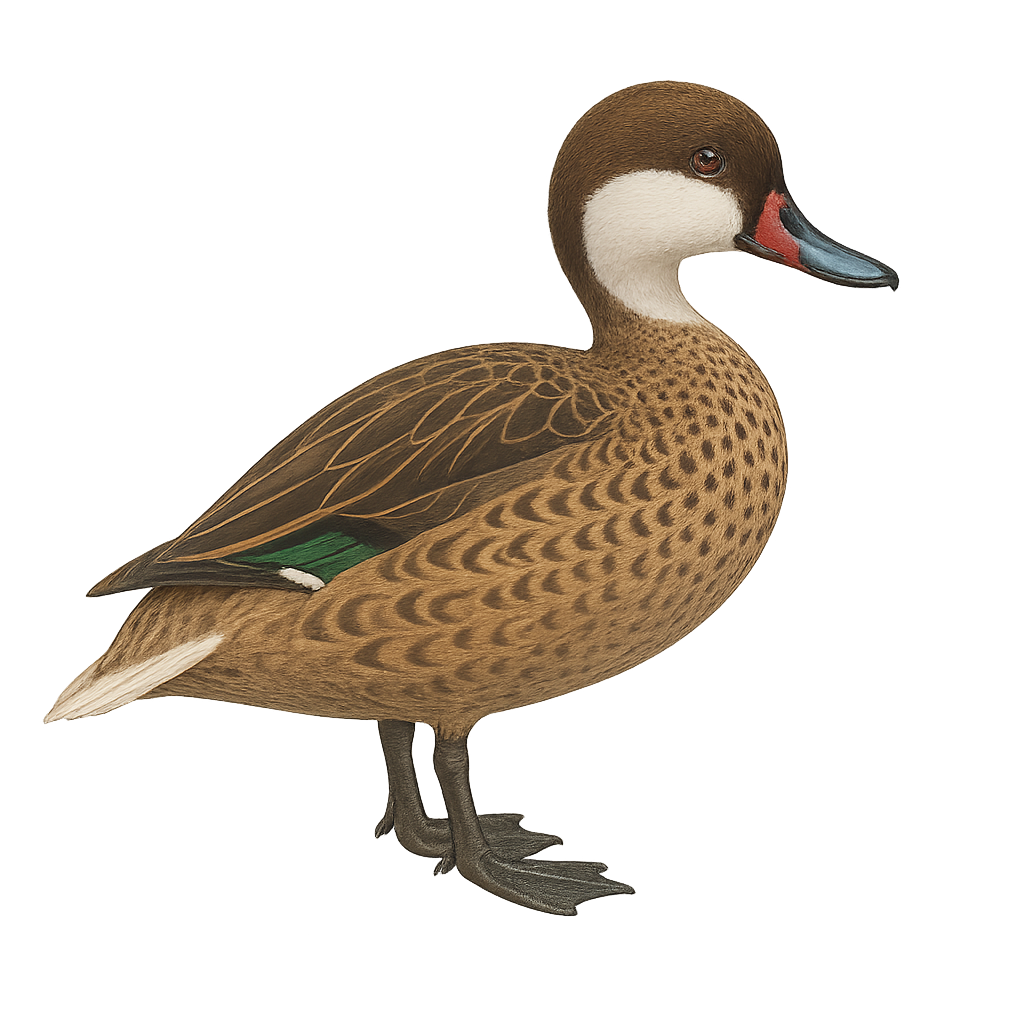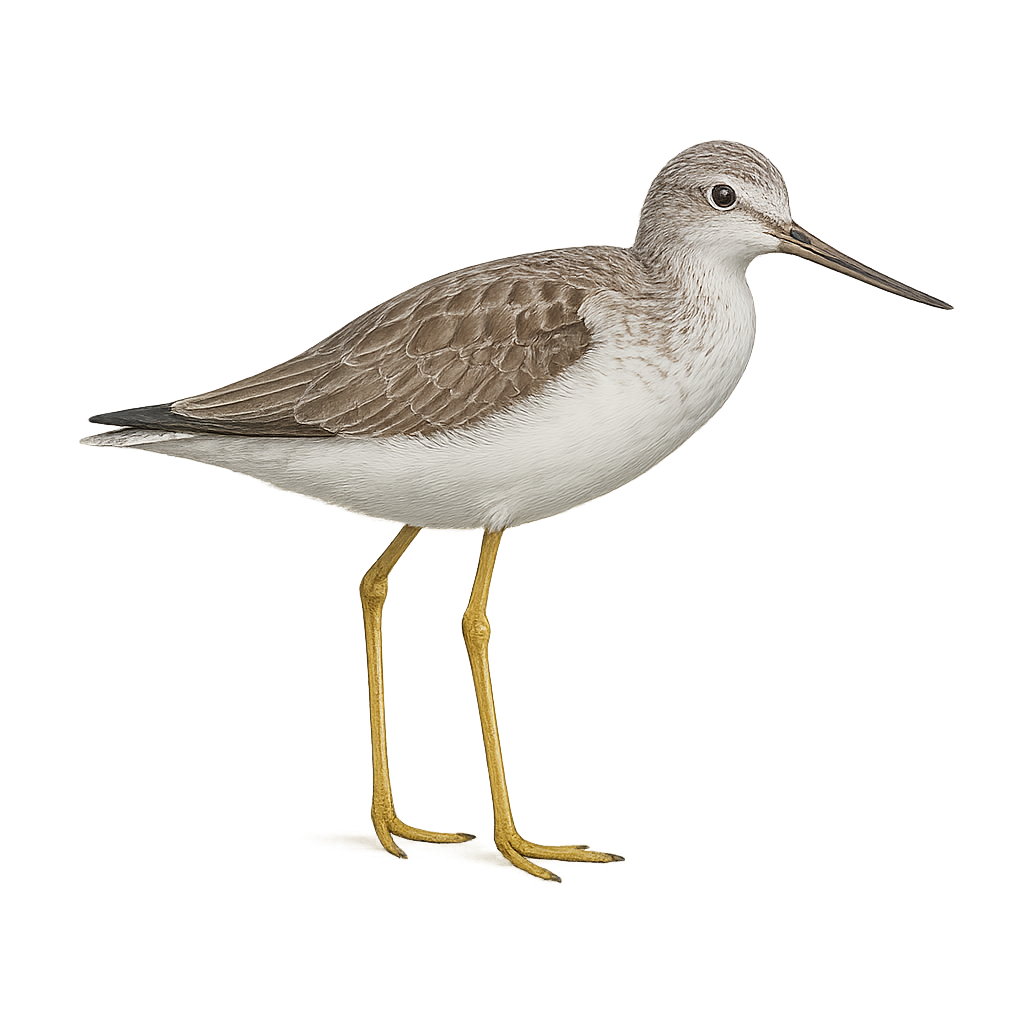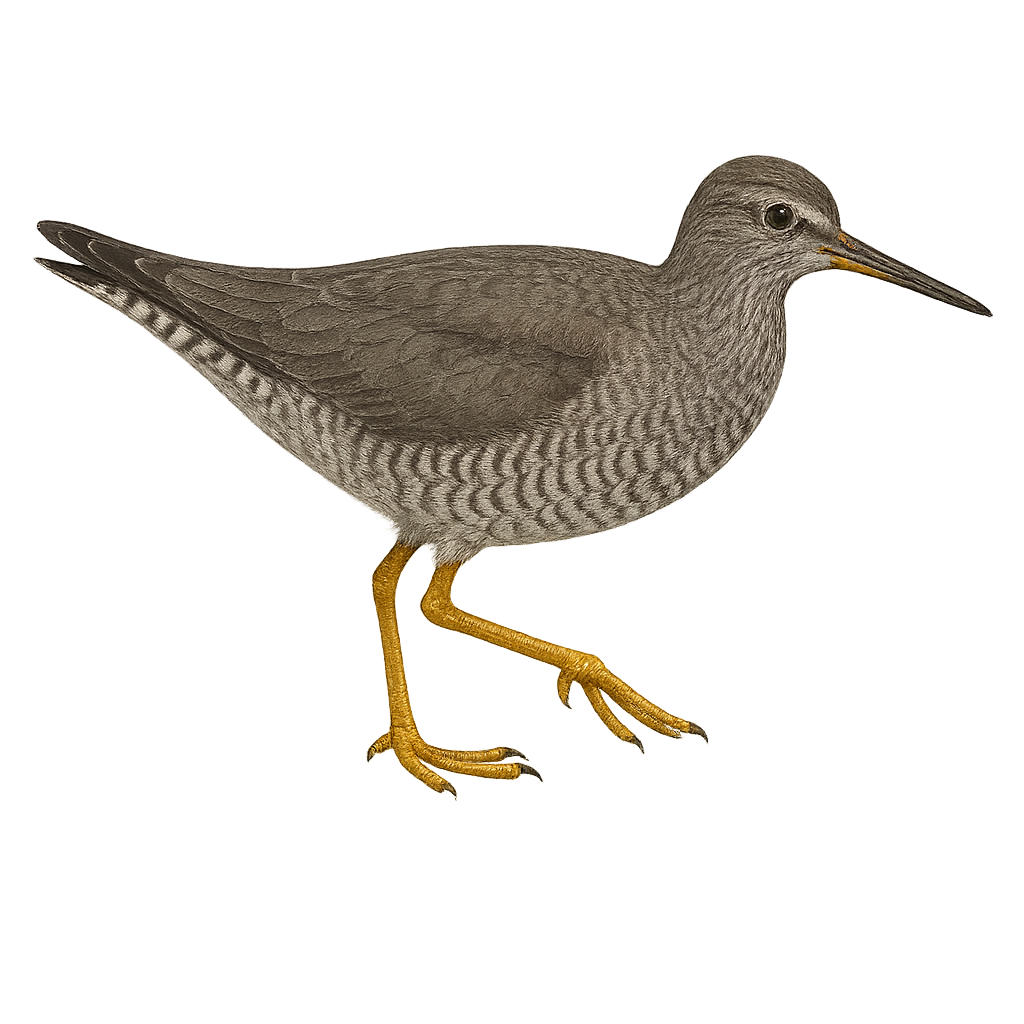The wedge-tailed eagle is a large raptor measuring 0.9–1.3 m with dark brown plumage and long, slender wings. It inhabits savannas, open woodlands, plains and cliffs, feeding mainly on mammals, birds and reptiles. During nesting, pairs build large stick nests in trees or on cliffs.
The Wahlberg's Eagle, or Hieraaetus wahlbergi, is a medium-sized raptor primarily found in sub-Saharan Africa. It is characterized by its uniform brown plumage, although some color variations may occur. This eagle is often seen soaring gracefully in the sky, searching for prey. It primarily feeds on small mammals, birds, and reptiles. The Wahlberg's Eagle is a migratory bird, moving south during the dry season. It prefers wooded savannas and open forests, where it can easily spot its prey. Although its conservation status is currently "least concern," deforestation and habitat loss could threaten its populations in the future.
The Western Reef Heron, Egretta gularis, is an elegant and slender bird often seen in coastal areas and estuaries. It has plumage that can range from pure white to slate gray, with a distinctive white throat. Its long legs and thin, pointed beak are perfectly adapted for hunting fish and small invertebrates in shallow waters. This bird is known for its unique hunting technique, using its wings to create shade and attract prey. Although primarily solitary, it can be seen in small groups during the breeding season. The Western Reef Heron is a fascinating sight for birdwatchers and nature enthusiasts.
The Warbling Antbird, Hypocnemis cantator, is a small bird from the Thamnophilidae family, primarily found in the humid tropical forests of South America. It is recognizable by its brown and white plumage, with distinctive patterns on its head and back. This bird is often heard before it is seen, thanks to its melodious and repetitive song. It primarily feeds on insects and other small invertebrates found in the forest litter. The Warbling Antbird is a territorial bird, usually living in pairs or small family groups. It is known for its discretion and ability to blend into its dense, leafy environment.
The Waved Albatross, or Phoebastria irrorata, is a remarkable seabird native to the Galápagos Islands. Known for its striking white and brown plumage, it features a bright yellow bill and long, narrow wings designed for gliding over vast oceanic distances. This albatross is famous for its elaborate courtship displays, where pairs engage in synchronized dances. Primarily monogamous, it forms lasting bonds with its mate. It feeds mainly on fish and squid, diving into the ocean to catch its prey. Unfortunately, this species is threatened by industrial fishing and climate change, which impact its food sources and nesting sites.
The White Bellbird, or Procnias albus, is a fascinating bird from the Cotingidae family, known for its piercing and distinctive call. It is primarily found in the tropical rainforests of South America, particularly in Brazil, Venezuela, and Guyana. The male is notable for its striking white plumage and fleshy wattle on its beak, used to attract females during mating season. The female, on the other hand, has a more subdued olive-green plumage, allowing her to blend into the foliage. This bird is mainly frugivorous, feeding on fruits and berries, but may also consume insects occasionally.
The White Helmetshrike is a fascinating bird, recognizable by its distinctive crest and primarily gray and white plumage. It mainly inhabits the savannas and open forests of sub-Saharan Africa. This sociable bird lives in family groups and is often seen feeding on insects and small invertebrates. Its white crest, which gives it its name, is particularly visible when it is alert or during courtship displays. Although its song is discreet, it frequently communicates with its peers through high-pitched calls. The White Helmetshrike is a resilient bird, capable of adapting to various environments, although it prefers open areas where it can easily spot its prey.
The White-fronted Nunbird is a medium-sized bird, measuring about 20 to 22 cm in length. It is easily recognizable by its dark gray plumage, contrasting with a distinctive white forehead and a bright red bill. This bird primarily inhabits the humid tropical forests of South America, notably in Brazil, Colombia, and Peru. It feeds mainly on insects and small fruits, which it captures in flight or by foraging through foliage. The White-fronted Nunbird is often observed in small family groups, actively moving through the canopy. Although relatively common in its habitat, it remains discreet and can be difficult to spot due to its wary behavior.
The Woodcock is a discreet and nocturnal bird, difficult to spot due to its speckled plumage that allows it to blend perfectly into the undergrowth of forests in Europe and Asia. This bird, with its silent flight, is primarily insectivorous, feeding on earthworms, insects, and small arthropods it finds by probing the ground with its long, straight bill. The Woodcock is known for its erratic flights and mysterious calls during the breeding season, often heard as a "wingbeat" in the woods.
It leads a quiet and solitary life, creating a nest on the ground, well-hidden among dense vegetation. Although its population is relatively stable, the Woodcock is sometimes threatened by deforestation and disturbance of its natural habitats.
The Western Sandpiper, Calidris mauri, is a small shorebird found primarily along the coasts and wetlands of North America. It is identifiable by its brownish-gray plumage with darker patterns on the back and a slightly streaked breast. Its slender, slightly curved bill is well-suited for probing mud for food. During the breeding season, it migrates to Arctic and subarctic regions to nest. Its diet mainly consists of invertebrates, small crustaceans, and insects. Outside the breeding season, it often forms large flocks with other sandpiper species.
The Wilson's Snipe, Gallinago delicata, is a medium-sized bird belonging to the Scolopacidae family. It is characterized by its mottled brown plumage, long legs, and straight, slender bill, perfect for probing wet soils for food. This bird is often found in marshy areas, wet meadows, and lake edges. Its flight is rapid and zigzagging, making it difficult to track. The Wilson's Snipe is known for its distinctive call, often heard during the breeding season. It primarily feeds on insects, worms, and small crustaceans. Although discreet, it is a fascinating sight for birdwatching enthusiasts.
The white wagtail is a small passerine bird found primarily in open areas such as fields, roadsides, and riverbanks across Europe and Asia. It is easily recognized by its black and white plumage and distinctive wagging tail, especially when it runs or forages on the ground. This small bird primarily feeds on insects and small invertebrates, which it captures while running or rummaging through low vegetation.
The White-eared Night Heron, or Gorsachius magnificus, is a rare and elusive bird primarily found in the humid forests of southern China and northern Vietnam. This medium-sized heron is distinguished by its dark plumage, wings adorned with white patterns, and a characteristic white patch behind the eye. It inhabits wooded areas near water bodies, feeding mainly on fish, aquatic insects, and small amphibians. Its behavior is predominantly nocturnal, making it difficult to observe. Due to deforestation and habitat loss, the White-eared Night Heron is classified as endangered by the IUCN.
The White-throated Sparrow is a medium-sized songbird, easily identified by its distinctive white throat contrasting with its brown streaked plumage. It also features a yellow patch above each eye. Found mainly in North America, it inhabits mixed forests and dense undergrowth. Its melodious song is often heard in spring and summer. This sparrow is a partial migrant, moving to the southern United States in winter. It primarily feeds on seeds, insects, and berries. Pairs nest on or near the ground, hiding their nests under bushes or tall grasses. The White-throated Sparrow is a sociable bird, often seen in small groups, especially outside the breeding season.
The White-browed Bulbul, or Pycnonotus luteolus, is a medium-sized bird known for its bright yellow head and distinctive white eyebrows. It primarily inhabits the dry and semi-arid regions of India and Sri Lanka. Its plumage is mainly olive-brown, allowing it to blend into its natural surroundings. This bird is often seen in small groups, feeding on fruits, insects, and nectar. It is known for its melodious and varied song, often heard at dawn. The White-browed Bulbul is a resilient bird, capable of adapting to various habitats, including urban gardens and sparse forests.
The White Hawk, Pseudastur albicollis, is a medium-sized raptor known for its predominantly white plumage with black wings and tail. It inhabits dense tropical forests in Central and South America, feeding mainly on reptiles, small mammals, and birds. Its flight is majestic, often soaring above the canopy. It is known for its piercing call, used to mark its territory. Although generally solitary, it can be seen in pairs during the breeding season. Its adaptability to various forest habitats makes it a resilient species despite increasing deforestation.
The White-bellied Parrot is a small, colorful parrot native to the tropical forests of South America, particularly in Brazil, Bolivia, and Peru. It is characterized by its bright green plumage, white belly, and orange head. This parrot is known for its playful and curious behavior, often seen climbing and swinging in trees. It typically lives in small groups and feeds mainly on fruits, seeds, and flowers. Although sociable, it can be territorial towards other birds. The White-bellied Parrot is appreciated for its ability to mimic sounds and its affectionate nature towards humans.
The Wrinkled Hornbill, Rhabdotorrhinus corrugatus, is a striking bird known for its glossy black plumage and distinctive casque, often reddish-orange. This casque, an extension of the upper beak, plays a crucial role in communication and courtship. Males and females can be distinguished by eye color, with males having red eyes and females white. They primarily inhabit the tropical forests of Southeast Asia, feeding on fruits, insects, and occasionally small animals. Their social behavior is fascinating, as they form monogamous pairs and are known for their cooperative breeding. Unfortunately, their habitat is threatened by deforestation.
The White-thighed Hornbill, or Bycanistes albotibialis, is a striking bird with distinctive black and white plumage and a large bill. It primarily inhabits the tropical forests of Central and West Africa. This bird mainly feeds on fruits but can also consume insects and small animals. Hornbills are known for their social behavior, often seen in small groups. They nest in tree cavities, where the female is sealed in during the incubation period. The White-thighed Hornbill plays a crucial role in seed dispersal, contributing to forest regeneration. Although their population is stable, deforestation poses a potential threat to their natural habitat.
The White-crested Hornbill, or Horizocerus albocristatus, is a fascinating bird found in the tropical forests of West and Central Africa. Its most distinctive feature is its striking white crest, contrasting with its black and brown plumage. It measures about 50 cm in length and has the curved beak typical of hornbills. This bird is often seen in small groups, feeding mainly on fruits, insects, and small animals. Its call is a mix of whistles and croaks, often heard in the dense canopy. Although relatively common in its habitat, deforestation poses a threat to its populations.
The West African Pied Hornbill, or Lophoceros semifasciatus, is a small forest hornbill from equatorial Africa, easily identified by its bright white belly contrasting with its black head, wings, and tail. It has a pale yellow bill with a dark tip and lacks a prominent casque. It inhabits the canopy of tropical forests and is often seen crossing clearings or flying over roads in small groups. It feeds on fruits, insects, and occasionally small vertebrates. Its call is a series of sharp whistles. Although discreet, the West African Pied Hornbill remains relatively common in undisturbed forest areas.
The White-crowned Hornbill, or Berenicornis comatus, is a fascinating bird from the Bucerotidae family, recognizable by its distinctive white crest adorning its head. This large bird, measuring about 80 to 90 cm in length, sports predominantly black plumage with white shades on the head and neck. Its long, curved bill is typical of hornbills, and it has bare skin around the eyes, often blue in color. The White-crowned Hornbill primarily inhabits the tropical forests of Southeast Asia, notably in Malaysia, Thailand, and Indonesia. Known for its social behavior, it often lives in small family groups. Its powerful call resonates through the canopy, adding a sonic dimension to its lush environment.
The Western Long-tailed Hornbill, or Horizocerus granti, is a captivating bird belonging to the Bucerotidae family. It is recognized by its striking black and white plumage and long tail. This bird is primarily found in the tropical forests of West Africa, where it feeds on fruits, insects, and small animals. The Western Long-tailed Hornbill is a social bird, often seen in small groups. Its distinctive call echoes through the canopy, adding an auditory layer to its lush habitat. Although its conservation status is currently concerning, it plays a crucial role in seed dispersal, contributing to the health of its ecosystem.
The Wreathed Hornbill, Rhyticeros undulatus, is a striking bird known for its large size and distinctive appearance. It features a prominent casque on its large bill, often colorful, which is used to amplify calls. Males and females exhibit marked sexual dimorphism, with males having a bright yellow throat and females a blue one. This bird primarily inhabits the tropical forests of Southeast Asia, playing a crucial role in seed dispersal due to its frugivorous diet. The Wreathed Hornbill is a social bird, often seen in small groups. However, it is threatened by deforestation and hunting, leading to population declines in some areas.
The Whistling Hornbill, or Bycanistes fistulator, is a medium-sized hornbill found in the tropical forests of Central and West Africa. It is identified by its black-and-white plumage, pale belly, and ivory bill with a modest casque. Its name comes from its soft, whistling call often heard in flight. It inhabits forest canopies, wooded clearings, and gallery forests, feeding mainly on fruits but also on insects. The Whistling Hornbill is typically seen in pairs or small groups. Although relatively widespread, it is vulnerable to habitat degradation.
The White-winged Duck, Asarcornis scutulata, is a rare and endangered species in the Anatidae family. It is notable for its dark plumage with striking white wings visible in flight. Primarily nocturnal, it inhabits dense forests and wetlands in Southeast Asia. Its population is declining due to habitat loss and hunting. This duck is often solitary or found in small groups. It feeds on aquatic plants, insects, and small fish. Conservation of its natural habitat is crucial for its survival, with protection efforts including the establishment of nature reserves and awareness programs.
The Wood Duck, Aix sponsa, is a striking waterfowl known for its vibrant plumage and unique habits. The male displays bright colors with an iridescent green head, red eyes, and distinctive white patterns, while the female has a more subdued brown-gray plumage with white eye markings. Found primarily in North America, this duck frequents wooded areas near lakes, rivers, and swamps. It is known for its ability to nest in trees, often using natural cavities or artificial nest boxes. The Wood Duck is an excellent swimmer and diver, feeding on aquatic plants, insects, and small fish.
The White-cheeked Pintail, or Anas bahamensis, is a medium-sized duck known for its distinctive white head with a red spot on the bill and speckled brown plumage. It inhabits wetlands in the Caribbean, South America, and the Galápagos. Preferring shallow waters, it feeds on aquatic plants, insects, and small crustaceans. Often seen in small groups or pairs, this duck has a fast, direct flight but spends much time swimming and dabbling. Its population is stable, though habitat loss and hunting pose threats.
The Greenshank is a large species of wader, distinguished by its long bill and slender legs. It has a gray-brown plumage marked with lighter spots and a slightly speckled head, which helps it blend into the muddy and marshy environments of wetlands and shorelines. This wader is especially known for its characteristic calls, a loud barking cry, which is how it gets its name. It primarily inhabits wetlands, estuaries, and shorelines where it feeds on small invertebrates, worms, and crustaceans found by probing in the mud.
The Greenshank is a migratory bird that travels long distances between its breeding grounds in Europe and its wintering sites in Africa and Asia. Although its population remains relatively stable, it faces threats from the loss of wetland habitats and pollution. The species is protected in some areas where it is found.
The Wandering Tattler, Tringa incana, is a medium-sized shorebird, measuring about 25 to 27 cm in length with a wingspan of 50 to 60 cm. Its plumage is primarily gray with lighter shades on the belly and dark barring on the chest. The legs are yellow, and the bill is straight and relatively long, adapted for foraging in coastal areas. This bird is often seen moving quickly along rocky shores, searching for small invertebrates and crustaceans. A migratory species, it breeds in Arctic regions and migrates to Pacific coasts during the winter.


